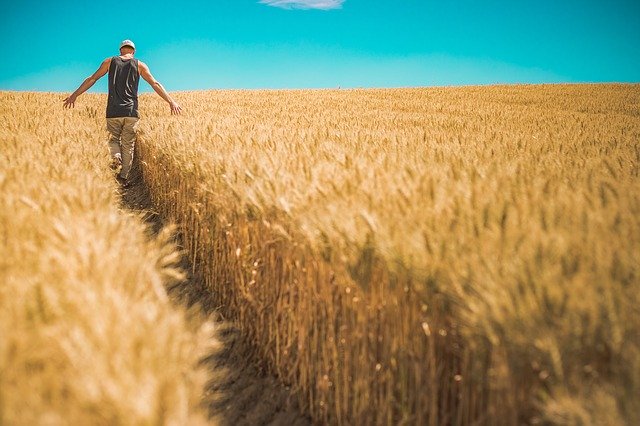Before the coronavirus pandemic reached the United States, between 30 to 40 percent of our food supply was thrown away. Since lockdowns started, however, we’ve seen this play out on a much larger scale. Widespread restaurant, hotel, and school closures have greatly reduced the market for farm goods. With storage filled to capacity, some farmers have been destroying excess food — including burying fields of onions and pouring out surplus milk.
At the same time, food banks and local food suppliers are struggling to meet a huge uptick in demand. The coronavirus pandemic has shown us the value of preparing for the unexpected. Can we implement lasting solutions in our local food systems before the next major disruption?
Earth911 spoke to local farmers and community supported agriculture (CSA) operators for their take on how we can build enduring local food resilience during and post-pandemic. They identified four important steps to take when building local networks that ensure food resilience.

Building Relationships in the Local Food System
According to Executive Director Doria Robinson, the CSA waitlist at Urban Tilth in Richmond, California, is currently 317 people. Richmond is a food desert, and Urban Tilth’s mission is to alleviate this by helping the community “build a more sustainable, healthy, and just food system.” Urban Tilth creates mutually beneficial relationships with larger, “regionally local” farms within a 30-minute drive of the community. This helped them reach a broader community during the pandemic and continue to “meaningfully contribute nutrient-dense calories to folks’ diets,” says Robinson.
Urban Tilth also plans to reach out to local milk and grain producers and fishermen, “so the relationships are in place if emergencies happen.”
Yet Urban Tilth isn’t the only CSA experiencing skyrocketing demand. Lorraine Walker, owner of Eatwell Farm in Dixon, California, grows more than 150 crops and provides CSA boxes 51 weeks out of the year. When the pandemic hit, Eatwell’s orders increased six-fold and they had to turn away new members. It underlined the need for a “strong, diversified, and robust” local food system, notes Walker.
In the early days of the pandemic, Walker found a win-win opportunity for the CSA to partner with local businesses. After a friend told Walker her granola company would lose 30 percent of regular orders, she diverted those orders to her CSA members. She also added other locally grown items to the boxes, including kimchi, miso, and quail eggs and meat.
Improving Access to Local Food
Walker believes that the price point is a major obstacle to building local food resilience — most of us are not paying the true cost of our food. “Over the past many decades,” Walker writes in the Eatwell newsletter, “we have been convinced that food should be cheap, especially meat. It shouldn’t, ever.”
But she understands that price compels many to choose cheaper, imported food over locally farmed produce. “How does a farm in California, with all of our costs, compete with inexpensive fruit and veg in the supermarkets from growers in Mexico, Chile, Argentina, or China? We can’t, and that is the truth.”
That’s why Urban Tilth is doing more to make fresh produce more accessible to the Richmond community. Their “Pay It Forward” program makes CSA boxes available to low-income people for $10 a week while more affluent members pay more.
Expanding the Cultural Competence of CSAs
In Minneapolis, Minnesota, where “access to fresh meat and produce is nonexistent,” Naima Dhore founded Naima’s Farm to offer “the best kale and Swiss chard in the Twin Cities.” Dhore sees education as an important part of her role as a local food supplier. As a Somali-American farmer, she is passionate about teaching East African community members to identify healthy choices.
Urban Tilth also recognizes the need for CSA boxes to serve community tastes. While vegetables like carrots, cabbage, and potatoes are universal, building relationships with regional farmers allows them to incorporate “culturally competent foods” specific to Latinx, African-American, and Asian cuisines. Members can select culturally specific foods, like chayote or peppers, from a list in their boxes.
Regular contests help Urban Tilth members reduce food waste. If they share a photo via email or social media of several meals they cooked with ingredients from their box, they receive one week free. “We see lots of soups and stews,” says Robinson. “It encourages other folks to say, ‘Oh, I can make that!’”
Cementing Community Support
As much as CSAs play a vital role in building local food resilience, so do we as consumers.
Choosing to buy locally has a large positive impact on our communities. But that support needs to be consistent. “People cannot expect farmers to up their production to help out in a crisis only to have all those new folks leave as soon as the crisis is over,” says Walker.
Here’s how she ended the aforementioned newsletter to her members:
Local farmers are heroes, but in my eyes the true heroes are all of you who have chosen a different path. Those of you who accept produce out of a CSA box that doesn’t always look perfect, sometimes coming to you with flaws. But still, you have made that commitment to a family farm, YOUR family farm. … I believe we are learning just how much our food shopping choices matter.”
The post Building Local Food Resilience appeared first on Earth911.com.








